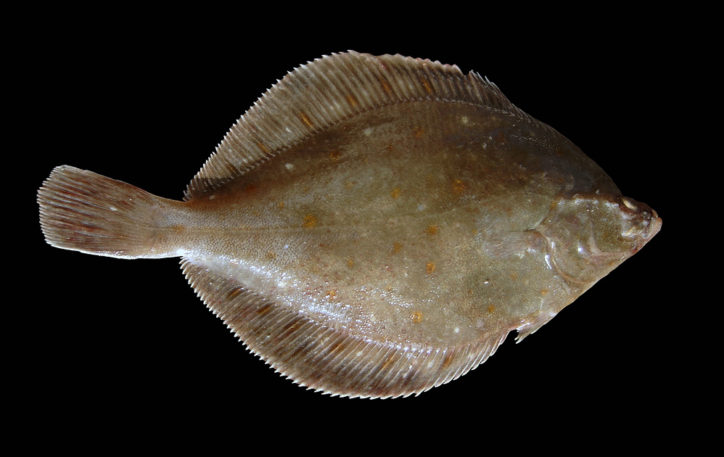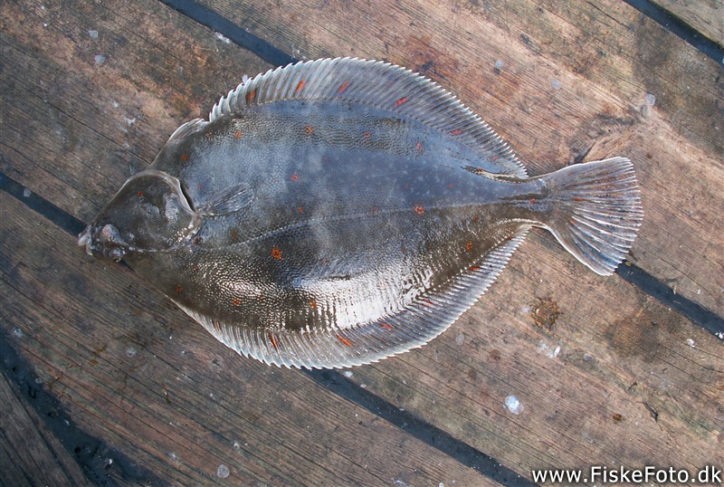Fish of the Pleuronectes genus of the Pleuronectinae subfamily of the Pleuronectidae (righteye flounders) family of the Pleuronectoidei suborder of the Pleuronectiformes (flatfishes) order of the Acanthopterygii superorder.

(European plaice. Photo by © Hans Hillewaert. en.wikipedia.org)
European plaice (Pleuronectes platessa) was first described in 1758 by the Swedish scientist Carl Linnaeus (1707 – 1778).
It lives at a depth of up to 200 meters, usually 10-50 meters. It prefers to swim near the sandy and muddy bottom. The maximum recorded length is 100 cm; specimens up to 40 cm long are more common. The maximum weight is 7 kg. It feeds mainly on thin-walled mollusks and polychaetes.

(European plaice. Photo © fiskefoto.dk)
It is a rare inhabitant of the Adriatic Sea, found in its northern part.
Names of European plaice (Pleuronectes platessa) in other languages are as follows:
Европейска камбала (Evropejska kambala) (Bulgarian), Schol (Dutch), Φασί Aτλαντικού (Fasi Atlandiku) (Greek), Solla europea (Spanish), Platessa, Passera (Italian), Scholle (German), Gładzica (Polish), Solha (Portuguese), Морская камбала (Morskaja kambala) (Russian), Iverak zlatopjeg (Serbian, Croatian), Morska plošča (Slovenian), Plie d’Europe (French), Platýs velký (Czech).